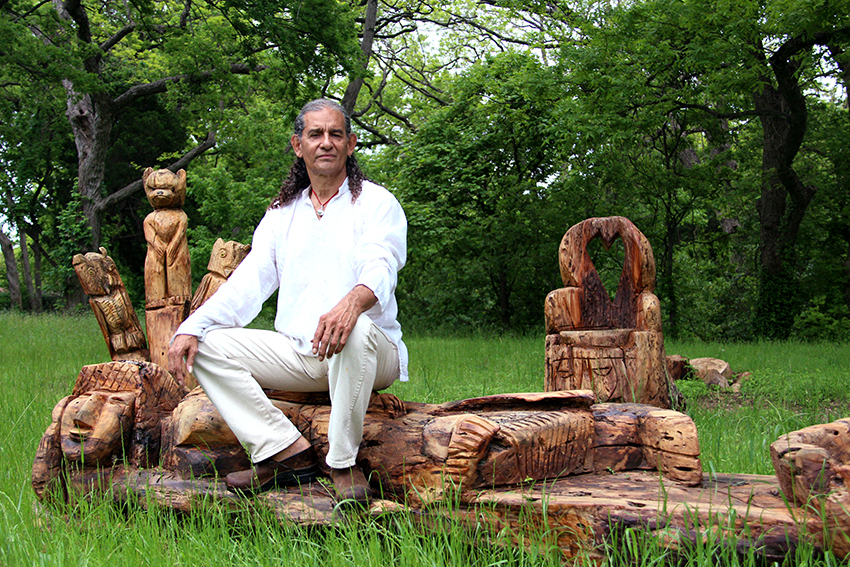East Austin artist Daniel Llanes walked around 24 acres of land full of fallen elm and pecan tree trunks. They were about to be burned by land developers, but Llanes wanted to transform the giant, old trunks of wood into sculptures that expressed the history of the land and the greater East Austin community.
“[The trunks] tell us what they want to be,” Llanes said. “When I start working with the chainsaw and a form starts to appear, I can almost hear it saying, ‘Get me out of here!’”
Llanes found the dead trees for his project on a property that formerly housed fuel storage facilities for major oil companies. He volunteers with the environmental advocacy group People Organized in Defense of Earth and Her Resources, or (PODER), which filed a lawsuit in 1993 to close the facilities after gasoline leaked onto nearby creeks and trees. Llanes partnered with sculptor Victor Torres to feature large-scale tree trunk carvings in an exhibit called “Spirit in the Trees” on May 1.
“‘Spirit in Trees’ gives us an opportunity to talk about the past and the present,” said Sylvia Herrera, a co-founder of PODER and UT alumna. “We won a case where [a small advocacy group] took on six major oil companies and won. Now we’re trying to maintain the integrity of those residents who have fought to maintain the beauty of the area.”
For 15 years, PODER monitored the cleanup of the area. Developers bought the property in 2012 to provide affordable housing and create studio spaces for Austin creatives, a project called thinkEAST. The trees left behind after the cleanup were going to be burned or tossed into a landfill; however, Llanes and Torres thought they could be carved into artwork to commemorate PODER’s struggle with the oil companies to save the property.
“We’re trying to intertwine the natural environment with new developments, and doing the sculptures of the trees is one of the most beautiful things to give back to the community and recognize that those trees played a major role,” executive director Susana Almanza said. “We have artists that can bring to life something that has already died.”
Llanes said when he saw the 200-year-old trunks, he started to think of shapes or forms that could represent what happened to the neighborhood. His trunk sculptures have a Native-American influence. One elm tree was carved into a totem that represents an Indian chief. Another trunk was used to sculpt a bear with an owl on each side. Llanes’ favorite, the 6-feet-tall “Pecan Sisters,” takes the form of two women lying on the ground.
“These trees are bringing out the history of East Austin because they have witnessed everything,” Llanes said. “They’ve got a life of their own.”
Herrera said the sculptures help the neighborhood remember the tank farms and the years it took to get rid of the contaminated scenery. This way, younger generations will know the importance of taking care of the environment.
“Even though people say they might be dead trees, I see them as a living spirit,” Herrera said. “Many of them took a hit. They were the front-line warriors that protected the neighborhood against an immediate attack or contamination from the tank farm.”















